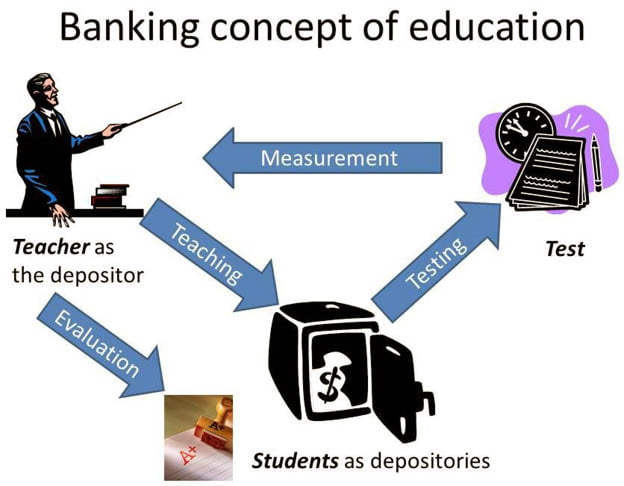Critical Pedagogy (CP) emanated from Critical Theory (CT) which was developed by the philosophers and theorists of the 1923 Frankfurt School of Thought like Theodor W Adorno, Jürgen Habermas, and Herbert Marcuse, to name a few. Any discussion on CLP necessitates a sufficient discussion on CT to better understand the theoretical grounding and historical background of the concept. CT deals with the idea of attaining a just society where citizens enjoy political, economic, and cultural control of their lives. CT takes its main theoretical grounding on Marxist thought where it is posited that the capitalist elites control power in the society which they take away from the masses of the working class, hence making the former as the oppressor and the latter as the oppressed. This theory is known as the Conflict Theory.
The oppressor-oppressed relationship, so to speak, presupposes that the oppressed are not able to enjoy political, economic, and cultural control of their lives because of the oppressors’ strong control of political, economic, and cultural powers in the society. Hence, there are social inequalities and social injustices experienced and committed to the oppressed. CT, therefore, presents a societal problem that necessitates action from the oppressed or the masses. In response to this Marxist analysis of the oppressed-oppressor relationship and its call for social action, several responses were proposed to address oppressions and injustices, hence to take back the control of power from the elite class to the masses.
CP was perceived to be the realization of the CT of the Frankfurt School. Marcuse argued that instead of the process of schooling serving as a free space for intellectual discourse, it withholds opportunities for learners to think independently and formulate their ideas. The theorists of Frankfurt argued schools espouse dependency of learners to teachers and hierarchical understanding of authority which undermine the kind of social consciousness that change and social transformation necessitates. To this, Brazilian philosopher Paulo Freire responded by developing the concept of the Pedagogy of the Oppressed. Freire is regarded as the inaugural philosopher of CT.
Paulo Freire in his work Pedagogy of the Oppressed, written in Portuguese in 1968, outlines his theories of education. It was first published in English in 1970, in a translation by Myra Ramos. The book is considered one of the foundational texts of critical pedagogy and proposes a pedagogy with a new relationship between teacher, student, and society. Dedicated to the oppressed and based on his own experience helping Brazilian adults to read and write, Freire includes a detailed Marxist class analysis in his exploration of the relationship between the colonizer and the colonized.
In the book, Freire calls traditional pedagogy the “banking model of education” because it treats the student as an empty vessel to be filled with knowledge, like a piggy bank. He argues that pedagogy should instead treat the learner as a co-creator of knowledge. He believes the fundamental nature of education is to be narrative. There is one individual reciting facts and ideas (the teacher) and others that just listen and memorize everything (the students). There is no connection with their real-life, resulting in a very passive learning style. This form of education is termed the banking model of education.

The banking model is very closely linked with oppression. It is built on the fact that the teacher knows all, and there exist inferiors that must just accept what they are told. They are not allowed to question the world or their teachers. This lack of freedom highlights the comparisons between the banking model of education and oppression.
Freire urges the dismissal of the banking model of education and the adoption of the problem-posing model. This model encourages a discussion between teacher and student. It fades the line between the two as everyone learns alongside each other, creating equality and the lack of oppression. There are many ways the banking model of education aligns with oppression. Essentially, it dehumanizes the student. If they are raised to learn to be blank slates moulded by the teacher, they will never be able to question the world if they need to. This form of education encourages them to just accept what is thrust upon them and accept that as correct. It makes the first step of humanization very difficult. If they are trained to be passive listeners, they will never be able to come to the realization that there even exists oppressors.






























